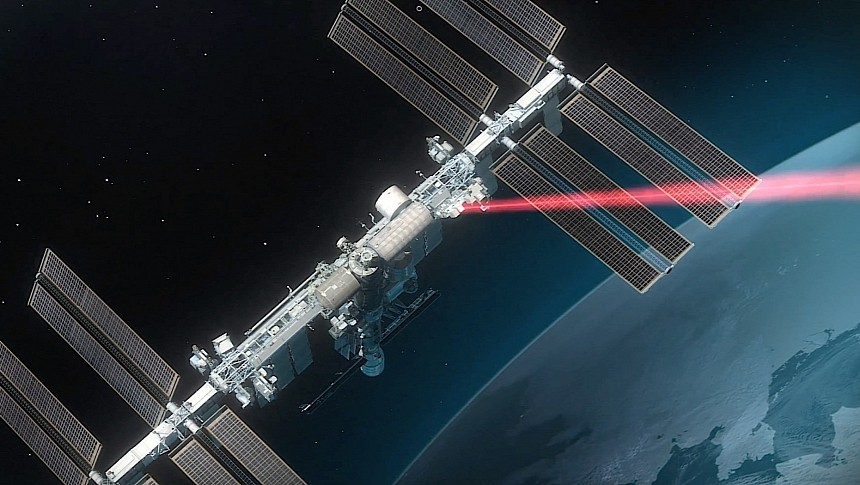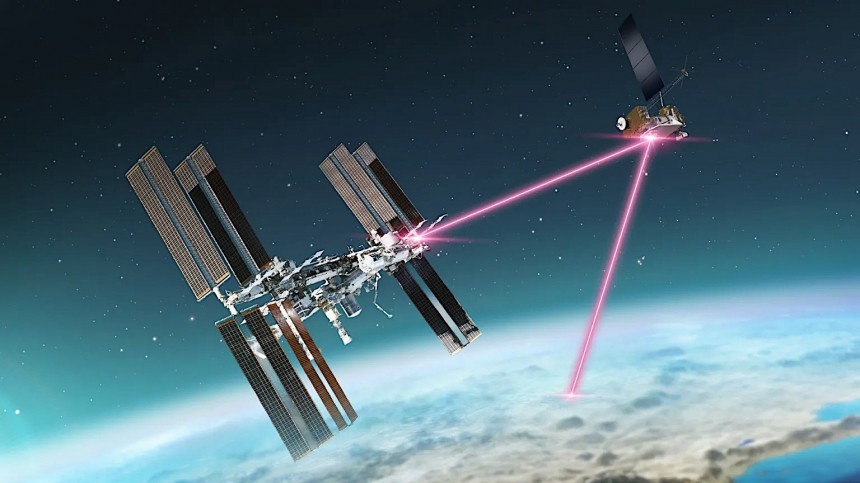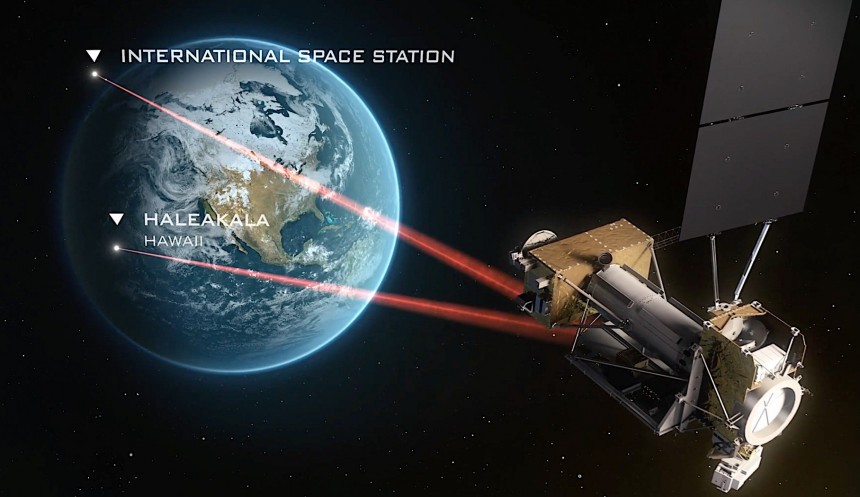There are many things a mission to space will not succeed without, and one of them is a communication system. For instance, although you'd think there's little anyone here on Earth could do to save a mission gone wrong millions of miles away, history time and again proved that belief wrong.
Emergencies in space do not happen all that often, so technically speaking comms systems are largely used for something else entirely: transmit science data to and from Earth, along with instructions and mission profiles.
We presently do that by using radio waves, a technology that has decades of reliable work behind it, and will probably continue to form the backbone of interplanetary communications for a while longer. The question is for how long exactly, because lasers are quickly catching up.
Radia waves may be reliable, but they are not particularly fast and encompassing. As the scope of our missions in the solar system increases, and they become more and more complex, volume will begin to become just as important as quality.
Knowing this NASA has begun long ago researching laser-based comms tech in the hope it will find a faster and more capable way of doing things. And it's already beginning to reap the first results.
Back in 2021, for instance, the space agency sent to space a piece of hardware called Laser Communications Relay Demonstration (LCRD). Floating around our planet in geosynchronous orbit at a point 22,000 miles (35,400 km, much further out than the ISS orbit) above the surface, it has already conducted some 300 experiments, transmitting data for testing purposes between two ground stations in a bid to define what laser comms will mean for the industry.
LCRD's most important achievement just happened at the beginning of the month, when it established a connection with the International Space Station (ISS). And not just any connection, but one that allows for data transfer at a rate of 1.2 gigabits per second.
The connection with the ISS was made possible thanks to another piece of hardware delivered there, to the Japanese Experiment Module-Exposed Facility (JEM-EF), back in November, by means of a SpaceX rocket and spaceship.
The new tech is called Integrated LCRD Low Earth Orbit User Modem and Amplifier Terminal (ILLUMA-T), and started talking with the LCRD for the first time (something scientists call first light) on December 5.
This first exchange of data between the space station-mounted system and the one floating about in orbit marks NASA's first two-way, end-to-end laser relay system, and it is supposed to show exactly how a user mission like the ISS "can benefit from a laser communications relay located in geosynchronous orbit."
How this works is a bit like this: the ILLUMA-T beams data to the LCRD, including high-resolution images, located much further out than the station itself is in relation to Earth. LCRD in turn will beam them down to the surface of the planet, to the receivers located in Hawaii and California. And all of that at a rate of 1.2 gigabits per second, which is both the maximum capacity of the system and exactly what is being achieved right now.
Although the American space agency says that at least for now it has no plans to replace the traditional ways of communicating by means of radio waves, and lasers will only complement that method for the time being, it's clear laser comms systems will become increasingly important in space exploration, especially during upcoming missions to the Moon and Mars.
The two main reasons for that are simple: speed and quantity. Laser systems essentially use infrared light to send and receive signals and, depending on the wavelength of that light, more data than ever before can be packed into a single beam. This in turn can lead to a "faster pace of scientific discoveries," something we’re in dire need of if we are to increase the pace of our solar system expansion mission to the desired level.
Technically the link between ILLUMA-T and the LCRD marks an important step toward the moment when laser comms begin seriously competing with the traditional way of doing things. And this is not the only such system the American space agency is working on.
Earlier this year, another piece of hardware called TeraByte InfraRed Delivery (TBIRD), fitted inside a satellite called Pathfinder Technology Demonstrator 3 (PTD-3), managed to send from orbit a massive 200 gigabits of data per second, something that is according to specialists the "highest data rate ever achieved by optical communications technology."
Separately, the Psyche spacecraft, currently en route to the namesake asteroid for a closer look, used an onboard piece of hardware called Deep Space Optical Communications, or DSOC, to transmit data all the way back to the Caltech Palomar Observatory in San Diego, California, at the time located at a distance of 10 million miles (16 million km) from the transmission's point of origin.
There is no timeframe for when laser comms will become commonplace in space exploration, but it's obvious now that there's no way around that moment.
We presently do that by using radio waves, a technology that has decades of reliable work behind it, and will probably continue to form the backbone of interplanetary communications for a while longer. The question is for how long exactly, because lasers are quickly catching up.
Radia waves may be reliable, but they are not particularly fast and encompassing. As the scope of our missions in the solar system increases, and they become more and more complex, volume will begin to become just as important as quality.
Knowing this NASA has begun long ago researching laser-based comms tech in the hope it will find a faster and more capable way of doing things. And it's already beginning to reap the first results.
Back in 2021, for instance, the space agency sent to space a piece of hardware called Laser Communications Relay Demonstration (LCRD). Floating around our planet in geosynchronous orbit at a point 22,000 miles (35,400 km, much further out than the ISS orbit) above the surface, it has already conducted some 300 experiments, transmitting data for testing purposes between two ground stations in a bid to define what laser comms will mean for the industry.
LCRD's most important achievement just happened at the beginning of the month, when it established a connection with the International Space Station (ISS). And not just any connection, but one that allows for data transfer at a rate of 1.2 gigabits per second.
The new tech is called Integrated LCRD Low Earth Orbit User Modem and Amplifier Terminal (ILLUMA-T), and started talking with the LCRD for the first time (something scientists call first light) on December 5.
This first exchange of data between the space station-mounted system and the one floating about in orbit marks NASA's first two-way, end-to-end laser relay system, and it is supposed to show exactly how a user mission like the ISS "can benefit from a laser communications relay located in geosynchronous orbit."
How this works is a bit like this: the ILLUMA-T beams data to the LCRD, including high-resolution images, located much further out than the station itself is in relation to Earth. LCRD in turn will beam them down to the surface of the planet, to the receivers located in Hawaii and California. And all of that at a rate of 1.2 gigabits per second, which is both the maximum capacity of the system and exactly what is being achieved right now.
Although the American space agency says that at least for now it has no plans to replace the traditional ways of communicating by means of radio waves, and lasers will only complement that method for the time being, it's clear laser comms systems will become increasingly important in space exploration, especially during upcoming missions to the Moon and Mars.
The two main reasons for that are simple: speed and quantity. Laser systems essentially use infrared light to send and receive signals and, depending on the wavelength of that light, more data than ever before can be packed into a single beam. This in turn can lead to a "faster pace of scientific discoveries," something we’re in dire need of if we are to increase the pace of our solar system expansion mission to the desired level.
Earlier this year, another piece of hardware called TeraByte InfraRed Delivery (TBIRD), fitted inside a satellite called Pathfinder Technology Demonstrator 3 (PTD-3), managed to send from orbit a massive 200 gigabits of data per second, something that is according to specialists the "highest data rate ever achieved by optical communications technology."
Separately, the Psyche spacecraft, currently en route to the namesake asteroid for a closer look, used an onboard piece of hardware called Deep Space Optical Communications, or DSOC, to transmit data all the way back to the Caltech Palomar Observatory in San Diego, California, at the time located at a distance of 10 million miles (16 million km) from the transmission's point of origin.
There is no timeframe for when laser comms will become commonplace in space exploration, but it's obvious now that there's no way around that moment.












